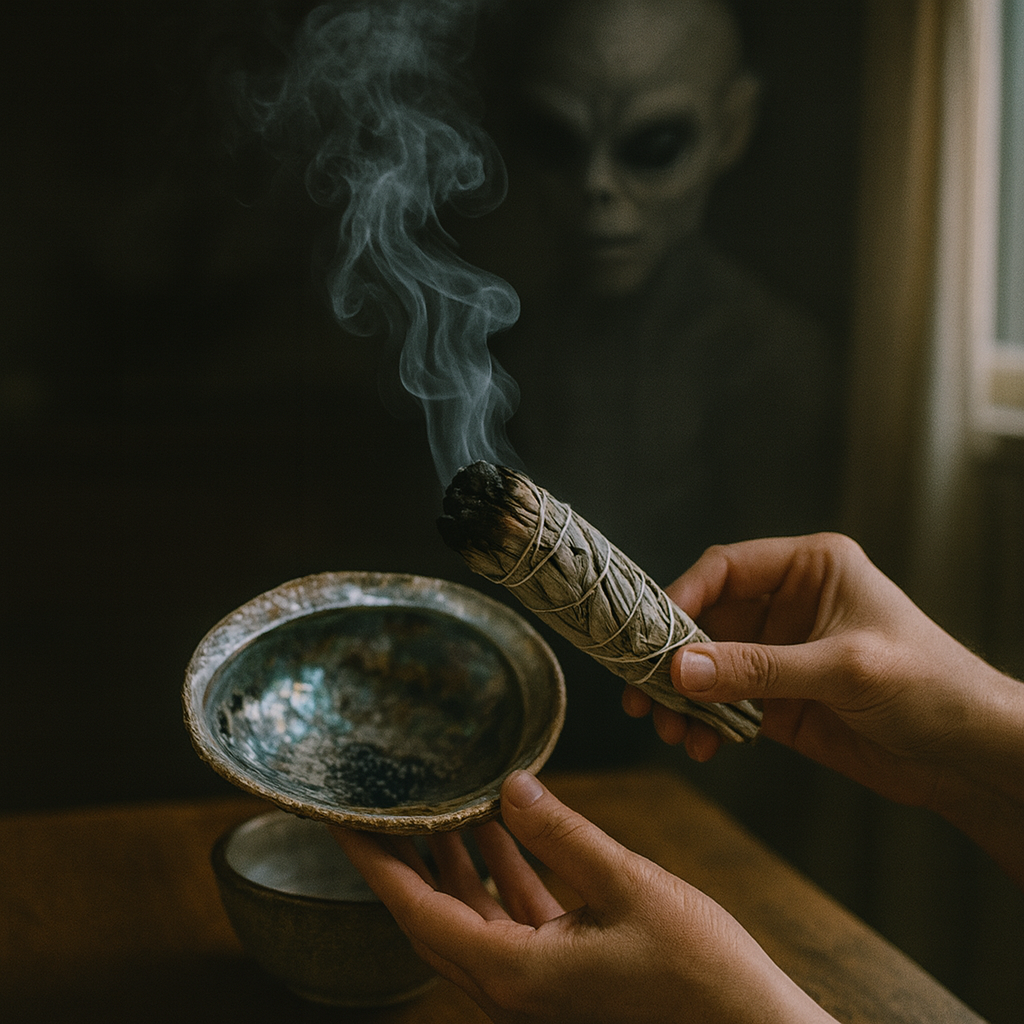Sage Smudging and Protection Ritual

Sometimes a space can feel heavy, tense, or outright hostile. You may notice restless sleep, strange noises, a constant sense of dread, or a string of unexplainable misfortunes. In such cases, many turn to the ancient practice of cleansing with sage, reinforced by spiritual protection. The practice of sage smudging dates back thousands of years and is most often attributed to Indigenous peoples of North America, especially among tribes such as the Lakota, Chumash, and Navajo, who used it in purification and prayer ceremonies. Among the Lakota, sage smoke is used in sweat lodges and Sun Dances to cleanse the mind, body, and spirit before prayer. The Chumash burn white sage in abalone shells to heal, protect, and banish negative forces, while the Cahuilla use it to cleanse homes after illness and for good fortune before hunts. These uses blend the spiritual and the practical, as sage contains natural antimicrobial compounds that help disinfect the air. This act of cleansing can also be viewed through the lens of interdimensional phenomena, where smudging serves as both a physical and energetic boundary against forces that may operate beyond normal human perception.
Written references to burning aromatic herbs for sacred purposes appear as early as circa 1500 BC in the Egyptian Ebers Papyrus, describing fumigation for healing and ritual purification. Archaeological evidence shows incense burners in Egypt’s 5th Dynasty, about 4,500 years ago, used in temple rituals where aromatic resins were burned to purify sacred space and invoke divine protection. The Hebrew Bible’s Book of Exodus, 6th–5th century BC, gives a holy incense recipe to be burned before the Lord in the Tent of Meeting. Pliny the Elder’s Naturalis Historia, 77 AD, records the ritual harvest and use of sage for protection and cleansing. While these historical sources describe ceremonial smoke for purification and protection, white sage smudging as practiced in North America is unique to its Indigenous origins.
Discussions of demonic possession and exorcism accounts collected by clergy and researchers describe surges in demand for exorcisms and detailed church protocols that emphasize careful discernment before any rite, alongside scientific explanations that point to neurological or psychological causes for possession-like symptoms. Placing smudging alongside these traditions helps clarify its role: a home-focused purification aimed at restoring peace, protecting boundaries, and supporting prayer when people sense spiritual pressure or oppression. The phenomenon of seeing shadowy or demonic figures in the periphery of vision, as described in accounts where entities appear briefly and vanish when looked at directly. Smudging, directing smoke into corners, doorways, and shadowed areas addresses these liminal zones where such presences are thought to linger—zones which some interpret as crossover points between dimensions.
Before beginning, center your energy by standing with feet planted firmly and taking three slow, deep breaths. Picture a shield of white-gold light surrounding you, impenetrable to anything harmful, and say silently or aloud, “I am surrounded by divine light. Nothing may harm me.” Prepare a bundle of white sage, a fireproof bowl or abalone shell, matches or a lighter, a small bowl of salt, and optionally black tourmaline or obsidian crystals, holy water, or consecrated oil. Crack open windows and, if possible, the main door to give unwanted energy a clear escape route.
Light the tip of your sage bundle until it smolders, then gently blow out the flame so the smoke flows steadily. Hold it over your bowl and clearly state your intention. For demonic or malevolent entities, speak firmly: “I command all harmful spirits, entities, and energies to leave this space now. You are not welcome. This home is protected by the light of God.” Call upon Archangel Michael, saying, “Archangel Michael, defender of the righteous, I call upon your sword of light. Stand at my side and protect this home from all harm. Let no shadow remain.”
Start at the main entrance and work clockwise through the home, moving smoke into all corners, under furniture, around windows, and over door frames. Pay special attention to dark or rarely used spaces like closets, attics, and basements. Speak words of release as you go: “Leave this place. You have no power here.” If you encounter a cold or heavy area, linger longer and strengthen your command, visualizing Michael’s sword cutting through the presence and dissolving it into light.
Once you return to the front door, seal the space by passing sage over the doorway and sprinkling a thin line of salt across the threshold. Visualize a barrier of blinding white light forming around the home and say, “This space is sealed in light and love. No darkness may enter.” You may place black tourmaline or obsidian near entry points and anoint door frames with holy water or oil.
To invite positive energy, play uplifting music, light a white candle, and speak blessings: “I invite peace, joy, and protection into this place. May all who enter feel safe and loved.” When the sage has burned out, take the ashes outside and scatter them far from the house, preferably in running water or into the earth, to symbolically release the energy completely.
This ritual works both physically, with smoke and symbolic action, and spiritually through intention, prayer, and divine protection. Smudging can also be seen as a shield against influences or entities that may not originate from our plane of existence. By combining ancient tradition with focused intention, it becomes not only a cultural and spiritual practice but also a form of protection aligned with modern understandings of unseen realms. If the space still feels unsettled, repeat the process after a few days.


